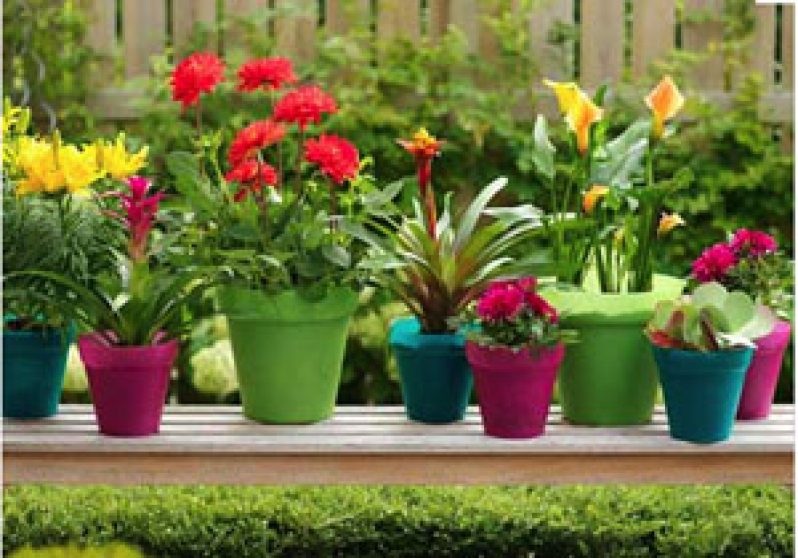EVERYONE likes a bright, colourful garden. So, instead of a hodge-podge, disorderly combination of plants and flowers, one can use combinations of plants with various flower colours in order to create the look one wants in a garden.
 The aim is to combine different colours of blooms, foliage and other elements in ways that the gardener finds pleasing; and also, some say, to create a mood — any mood the gardener wants to evoke.
The aim is to combine different colours of blooms, foliage and other elements in ways that the gardener finds pleasing; and also, some say, to create a mood — any mood the gardener wants to evoke.
Experts say there is no right or wrong when it comes to colour in the garden; colour choices are a matter of personal taste. For many, a riot of reds or yellows or pinks or blues is the real deal.
The prevailing wisdom is that colour schemes are more effective when used as large masses of colour, and not single plants or blossoms in a scheme.
Red and yellow are two colours that immediately capture
attention. Scientists say these two colours are actually seen faster than others. Our eyes are drawn to displays of red or yellow, so plants with flowers in these colours are good choices to place in key areas where attention is desired.
It is said that if a garden is long and narrow, it should ideally be planted with masses of bright red flowers at the far end, and this will visually pull that end in closer, so the garden won’t seem so long and narrow. This can be done with anything the gardener wants to bring closer, because red advances visibility.
Red also physically arouses people, and gets our adrenaline pumping. If you want to excite people, put lots of red en mass.
Masses of red or yellow are guaranteed attention-getters, and will not go unnoticed. In a full-sun garden, consider the red blooms of petunias or begonias.
Yellow is most often found in marigolds, but for taller plants with golden yellow blooms, try sunflowers.
The colour pink, psychologists say, is perceived as being sweet tasting and fragrant. It is also said to be a soothing, calming colour as well. Pink impatiens will brighten an area which is shaded.
Then there are masses of white.
If you are the type of person who likes things neat, tidy, and precise, white is the colour for you.
We think of doctors in their white coats, and laboratories with white walls and equipment, because we associate white with cleanliness, orderliness, and precision. Crisp flowerbeds or border plantings of white will give your garden a well-planned and orderly look; but masses of white can be hard on the eyes, so you may want to include areas of other colours as well.
White is also the last colour to fade from sight as darkness falls, so it’s a good choice for areas you want to look at in the evening, and also a good choice for bordering pathways, since you can follow your way easier even as it gets dark.
Masses of zinnias come to mind.
Green is an excellent complement to white, because it actually helps your eyes recover quickly from strain. Mid-tone to deep greens coming more from foliage can impart an air of richness and luxury to a garden, while lighter and yellow greens give a more casual look.
And there is blue!
Have you ever wondered why swimming pools are usually painted blue and not red? It’s because people perceive blue as being cool and calming.
It is said that when your field of vision is filled with blue, your body actually slows down and you get calmer.
You can use blue flowering plants to create a feeling of coolness even in a full-sun garden, by planting lots of blue flowers (lighter blues are better than dark blues). Even when it’s hot, you’ll feel cooler in the “blue” area of your garden.
Those are just a few tips on using flower and foliage colour to make your garden stand out.
Remember to group plants of a particular colour, ie: En masse for maximum impact.




.jpg)










